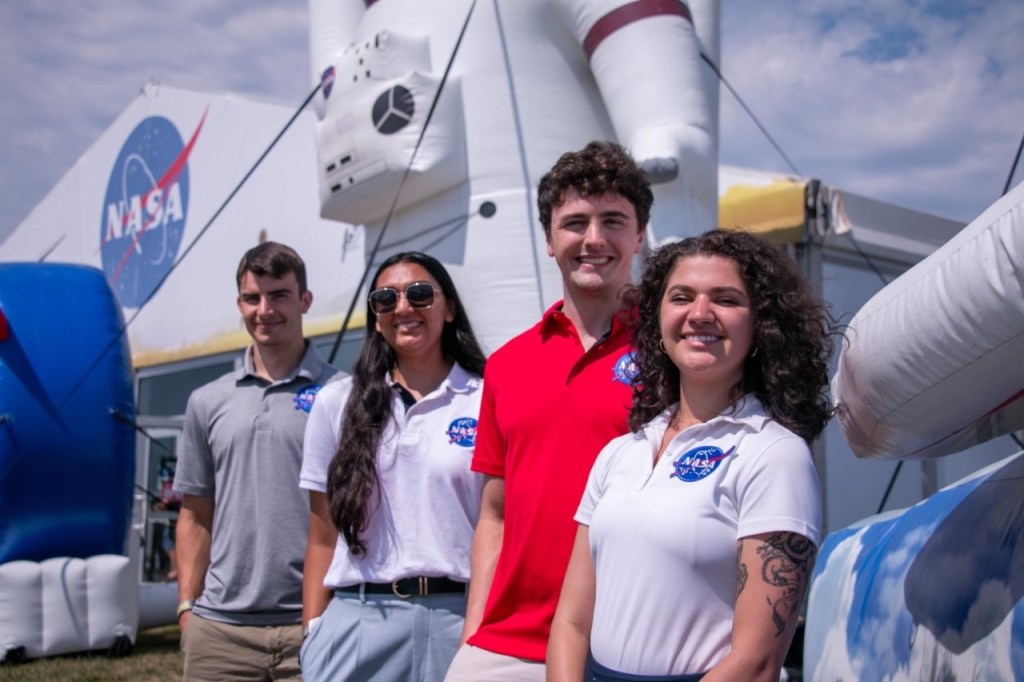 NASA and several industry teams are studying how to design and build an aircraft that could demonstrate technology to lessen the noise and window-rattling effects of supersonic flight.
NASA and several industry teams are studying how to design and build an aircraft that could demonstrate technology to lessen the noise and window-rattling effects of supersonic flight.
Image Right: Northrop Grumman conceptual designs of quiet supersonic aircraft. NGC image.
Preparations for NASA’s planned Sonic Boom Mitigation Project include a study of concept feasibility and design requirements for a prototype technology demonstration airplane that could reduce the startling “sonic boom” when an aircraft exceeds the speed of sound.
“NASA plans to develop a request for proposals to design and build a low sonic boom demonstrator using the information provided by the teams,” said Bob Meyer, Sonic Boom Mitigation Demonstration Project manager at NASA’s Dryden Flight Research Center, Edwards Air Force Base, Calif.
NASA awarded a grant to American Technology Alliances (AmTech) to fund these studies being conducted by four industry teams. The teams include solo endeavors by Boeing Phantom Works, Long Beach, Calif.; and Raytheon Aircraft, Wichita, Kan. Northrop Grumman, El Segundo, Calif., is working with Gulfstream Aerospace, Savannah, Ga.; and Lockheed Martin, Palmdale, Calif., has teamed with Cessna Aircraft Company, Wichita, Kan.
The same grant is also funding Allison Advanced Development Company, Indianapolis; GE Transportation, Cincinnati; and Pratt and Whitney, Hartford, Conn., to support the teams with engine-related data.
Each team has been awarded approximately one million dollars for a five-month study. NASA will use the results to define technology and design requirements for a low sonic boom demonstration aircraft. The questions the research will answer include whether it’s feasible to modify an existing aircraft to be the quiet boom demonstrator, or whether a whole new aircraft design will have to be created.
“The concept exploration studies are crucial,” said Peter Coen, of the Langley Research Center at Hampton, Va., and a member of the Sonic Boom Mitigation Project planning team. “Those studies will determine whether a low sonic boom demonstrator aircraft can be built at an affordable cost in a reasonable amount of time.”
The Sonic Boom Mitigation Project could begin work on the research aircraft as early as this fall.
“It is one element of a transformed Vehicle Systems Program in which breakthrough technologies are carried forward to flight,” said Rich Wlezien, manager of the Vehicle Systems Program in NASA’s Aeronautics Research Mission Directorate programs.
For more information about the Vehicle Systems Program in the Internet, see http://www.aeronautics.nasa.gov/vsp .
– end –
text-only version of this release
To receive status reports and news releases issued from the Dryden Newsroom electronically, send a blank e-mail message to dfrc-subscribe@newsletters.nasa.gov. To unsubscribe, send a blank e-mail message to dfrc-unsubscribe@newsletters.nasa.gov. The system will confirm your request via e-mail.
Dryden Flight Research Center
P.O. Box 273
Edwards, California 93523
Phone 661/276-3449
FAX 661/276-3566
Gray Creech
Dryden Flight Research Center, Edwards, Calif.
Phone: 661/276-2662
Kathy Barnstorff
Langley Research Center, Hampton, Va.
Phone: 757/864-9886
Elvia Thompson
NASA Headquarters, Washington, D.C.
Phone: 202/358-1696
























